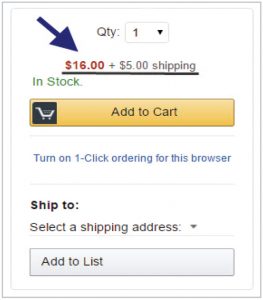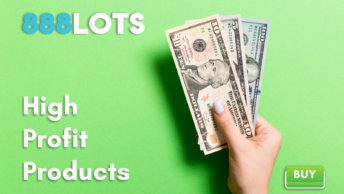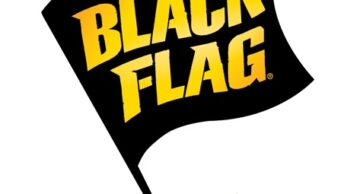This week in our Expert Advice section we have some great insights about the 5 key metrics to winning the buy box. The following is a guest post by Ohad Hagai, Feedvisor VP Marketing:
The most lucrative position on the Amazon marketplace is the Buy Box. Sellers with the Buy Box make considerably more sales than other sellers of the same items. Let’s put it this way: of the $88 billion worth of revenue that was generated through Amazon last year, an astronomical $72 billion was garnered through the Buy Box. That’s nearly 82% of the sales being made on Amazon!
To master the art of winning the Buy Box, sellers need to understand how Amazon determines who wins the Buy Box. Feedvisor’s 2016 Buy Box Bible is designed to help guide sellers through this process using expert best practices.
So which key metrics do sellers need to take into account?
Here Are the Top 5 Influencers to Winning the Buy Box
#1: FULFILLMENT METHOD
Fulfillment Method is the most important factor that affects the Amazon Buy Box. Fulfillment by Amazon (FBA) sellers are automatically ranked higher than Fulfillment by Merchant (FBM) sellers. Why? Because Amazon considers its own fulfillment service to have perfect scores for multiple variables, including: shipping time and on time delivery rate.
A FBM seller would need outstanding prices and scores in all other areas to outrank a FBA merchant. It’s not impossible, but it’s much more difficult. Seller-fulfilled Prime, a feature that allows successful FBM sellers to enjoy the benefits of Amazon Prime, factors in even more substantially. These sellers have an edge even over the FBA sellers in terms of winning the Buy Box.
#2: LANDED PRICE
Landed Price is the sum total an item is sold for. This includes shipping and taxes. A lower Landed Price awards sellers with a higher Buy Box score. While some factors are difficult to control, sellers can easily regulate the Landed Price. Using tools like algorithmic pricing sellers can undercut the competition, making their items more desirable to buyers and more attractive to Amazon at the same time.
Sellers can look at their overall Buy Box score. If the score is low, sellers can reduce their prices to boost their chances. The revenue increase a seller will make through the Buy Box significantly outweighs any initial setbacks accumulated from this tactic.
A product’s Landed Price can be seen on the Amazon Product Page:

#3: PERFECT ORDER PERCENTAGE SCORE
The Perfect Order Percentage (POP) Score tells Amazon what kind of experience buyers are having with a seller. The factors taken into consideration when calculating the POP include:
- Negative feedback
- A-to-Z guarantee claims
- Chargebacks
- Cancellations
- Late shipments
- Refunds
- Buyer-initiated messages
Amazon divides the perfect transactions a seller has over the last 90 days by the total number of 90-day orders. The better a seller’s POP score, the greater the Buy Box score will be as well. A POP of 95% or less significantly lowers one’s chances of landing this position.
#4: SHIPPING TIME
Shipping Time is another easy metric to manipulate. The faster items are shipped, the better the Buy Box score. Shipping Time will weigh more heavily in time-sensitive categories such as perishables or seasonal items.
Shipping times are ranked by levels, and advancing the level is even more important than increasing the shipping rate. For example, sellers who increase shipping time from seven days to three make delivery time significantly faster. However, sellers who increase Shipping Time from three days to two dramatically increase their likelihood of winning the Buy Box because they have advanced an entire Shipping Time level.
Shipping Time is arranged by brackets (business days):
- 0-2 days
- 3-7 days
- 8-13 days
- 14+ days
A product’s Shipping Time can been seen on the Offer Listing Page:

#5: ORDER DEFECT RATE
Finally, the Order Defect Rate (ODR) takes into account three factors and scores a seller accordingly. The factors are:
- A-to-Z guarantee claims
- Negative feedback
- Service charge rate
Using these three figures, Amazon calculates how many defective orders a seller has accrued over both the long-term and short-term periods. A 1% ODR or higher will dramatically hamper a seller’s chances of winning the Buy Box. Conversely, when sellers have a lower Order Defect Rate, they can afford to sell their items for a higher price without compromising their chances of landing the Amazon Buy Box.
How to Win the Buy Box Now
While these are the most critical factors involved in securing the Amazon Buy Box, there are other steps you can take to land the coveted position and increase your sales. Check out Feedvisor’s 2016 Buy Box Bible. With over 12,000 downloads to date, this guide contains compelling insights and is a must-read for Buy Box maneuvering.
By
Ohad Hagai
Feedvisor VP Marketing
About Feedvisor
Feedvisor is the pioneer of Algo-Commerce – the discipline of using Big Data and Machine Learning Algorithms to make business-critical decisions for online retailers. Feedvisor’s cloud-based Algorithmic Repricing and Revenue Intelligence solutions power millions of pricing decisions daily; providing retailers with actionable insights to maximize profitability and drive their business growth.







